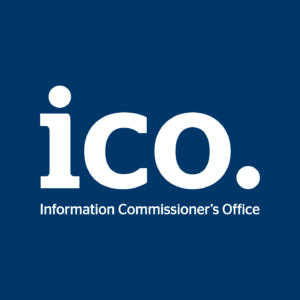Building a website is exciting, but ensuring it reaches your audience requires understanding the basics of page SEO. There are lots of reasons why it’s important to get it right from the start. This guide provides SEO tips for beginners and experts, helping you optimise your website for better visibility and ranking on search engines.
1. Choosing Keywords
Google Trends is the number 1 tool for finding out what people are searching for. Combine this with Answer the Public for the ultimate tag-team!
To use them together effectively, pick a topic you want to write about and put it into the Answer the Public search bar. You’ll get a list of questions people are regularly searching for, cut up into a wheel based on the types of questions – “How,” “Which,” “When” etc. Keep scrolling for more content ideas such as ones with prepositions, comparisons, and terms searched alphabetically.
Move over to Google Trends and plug in your question. Scroll down the page to the Related Queries section to find the most searched-for terms, and make sure you include a couple of them in your content for the best results.
2. Evergreen Content
Designed to answer age-old questions which are bound to be asked for years to come, evergreen content is there for the long-run. It’s unlikely to be updated, it’s always relevant, and it’s important include it in your website no matter what you write about.
3. Focus Keywords
Primary Keyword in the Title
Since search engines display about 60 characters of your title on desktops and about 50 characters on mobile, make sure your primary keyword is within the first 50 characters.
Primary Keyword in the Meta Description
The SEO description is the snippet that appears just below the title in the search engine results. It gives Google and other search engines a glimpse of what the post is about, which helps them make ranking decisions, while also giving the users a reason to click through to your website rather than another one. Search engines only show up to 160 characters, so keep your description within that limit to ensure it’s all shown.
Primary Keyword Uniqueness
Every page should have a unique keyword. Search engines will see the older piece of content that has been read, linked to by other websites, and has been a good resource for many people. Then it’ll look at your new piece of content with the same primary keyword, struggle to determine which page is most relevant, and then potentially lower the ranking of both pages.
Primary Keyword in the URL
Having your primary keyword in the URL is another way to show the readers that the link they are about to click is on topic for what they searched for, and the search engines like it too.
Primary Keyword at the Beginning of the Content
Using your keywords in the first 10% of your content reassures the users that they’ve clicked the correct link, and reinforces to the search engines what your post is about.
Primary Keyword used in the Content
Since it’s the topic of your page, this should be really easy to do. Just make sure you use your keywords throughout the content naturally. Don’t overdo it by using them in every sentence, or even every paragraph, as it will look forced and put your readers off.
Keyword Density
Use your keyword a few times in the post. Aim for 1 time every 150-200 words.
4. Links
External Links
When you write a post, it’s natural to reference other articles, tools, websites, and research available elsewhere – just like we did in this article. Referencing them in your post just makes your copy look natural to the search engines and the users. There are “nofollow” and “dofollow” links. Not all external links should be no-followed – be sure to set links to dofollow if the source is reputable, and nofollow if you’re not sure.
Internal Links
Internal links are a powerful way to improve the SEO of your post and also give your users a better experience on your website, as they can hop around the subjects that interest them without needing to go back to the main post page.
URL Length
From the start of the URL (including the ‘https’ part), you’ll need to aim for less than 75 characters. A very easy way to save a few characters is to miss out unimportant words such as “of,” “the,” and “in.” You can also swap your URL to remove the “www.” at the beginning. Don’t worry, both will still get people to your site, you’re just changing which one is the primary one that people see.
5. Title Readability
The importance of good titles on your posts cannot be overstated. Not only is the title the hook that brings the readers in, but it also affects search rankings in ways you might not have considered. When you write compelling titles that users cannot help but click, not only do you beat your competition (even though rank below them), but you also show Google that your result is more relevant to the query.
Sentiment in a Title
A proven way to get more people to click on your website in the Search Engine Results Pages (SERPs) is to have a title that evokes strong emotions. Not just emotions, strong emotions. That is, it doesn’t matter what kind of emotions are evoked, as long as the emotions are strong enough. Whether that’s curiosity or surprise, sadness or anger, a reader is more likely to click on your article if they feel a connection.
Use of a Power Word in the Title
These are words that encourage the reader to take action, and can fall under the following categories:
Seductive
These are the most powerful of the group, encouraging people to make choices on the less sensible side. Words such as “free” and “new” draw people to believe they’re getting something better. Let’s say you were selling a product and tried two different offers:
Offer 1: £4 Product + £1 Shipping
Offer 2: £6 Product + Free Shipping
Which offer do you think would make more sales? Amazon tried this in France when they introduced free shipping by starting with a shipping cost. When they changed to free shipping, sales increased, even though they increased the prices of the products a little to compensate!
Reasons
People are much more likely to listen to you if you give them a reason to. Social psychologist Ellen Langer conducted an experiment in the 1970’s. She asked the same question in 3 different ways:
Question 1: “Excuse me, I have five pages. May I use the Xerox machine?”
Question 2: “May I use the Xerox machine because I have to make some copies?”
Question 3: “Excuse me, I have five pages. May I use the Xerox machine because I’m in a rush?”
The results?
60% of people agreed to question 1.
93% of people agreed to question 2.
94% of people agreed to question 3.
The reason doesn’t make a difference – everyone asked was waiting to use the copier; giving a weak reason is better than not giving a reason at all because people simply like to have reasons for what they do.
How To
The best way to show your information is practical to what your reader is looking for. Make sure your content delivers on the promise, or you may find your reading times decrease and your bounce rates increase.
Emotional
While anger and disgust may stir people to share an article, fear (especially fear of missing out) can make people buy a product or service. If there’s limited stock, an annual sale, or something lots of people have and are showing off on social media, it motivates people to act quickly.
The most commonly used emotion is curiosity. Take this article as an example – I bet you were itching to find out what point 5 was if you’ve not already skipped ahead!
Sensory
Typically used more by holiday companies, fragrance companies, and restaurants, sensory words transport you to somewhere, or remind you of something.
James & Co Fragrance have a fantastic example on their No. 1 White candle – read it and see how it makes you feel, what you can smell, just from the words on your screen.
Use a Number in the Title
Which one of these are you more likely to click on – “How to improve your SEO,” or “7 simple steps to improve your SEO.” Hopefully, you said the second one. Giving your readers an expectation before they open your page draws them in, makes it easier to focus on the content, and is more likely to make them read the whole page.
6. Content Readability
The way you present your content is a big part of the user experience. If people find it easy to read what you have to say, they’re more likely to come back for more. And if they’re visiting your site and staying on it, search engines see that and like it, making you rank higher. Higher rankings mean more traffic, and so the cycle continues!
Table of Contents
If you’re writing a long post (such as this one), making the navigation easier for your readers is essential. Some users might be looking for a very specific answer and not want to trawl through the whole of your post. And, as a bonus, Google may include a “Jump To” link in the search results when it detects a table of contents in your post, massively improving your click-through rate!
Short Paragraphs
When people are faced with a wall of text, it’s hard to keep focused, and easy to skip over words or lines, leading to boredom and frustration. Keep your paragraphs to a few sentences – but don’t just use 1-sentence paragraphs all over the place!
Those are only for impactful statements.
Use of Media
People remember 10% of what they read, 30% of what they see, and 50% of what they see and hear together. You should mix up your media types throughout your content where possible to stick in peoples minds. Plus, it makes your content more interesting and engaging – after all, a picture’s worth a thousand words!
Overall Content Length
Use 600 words minimum on a blog post. Don’t waffle on, but make the content worth reading. It makes it easier to add your keywords naturally throughout the content without feeling like you’re having to cram them in. Longer posts also lead to longer on-page time and lower bounce rates, so search engines see it as valuable content worth sticking around for.
7. Image SEO
Alt text is important to SEO, as well as screen readers. A Search Engine is like a blind person – they can’t see your infographics or pretty pictures – you need to tell it what it’s missing. DO NOT use it as a space to cram in your keywords – if they occur naturally, or if you can work them into the description, great! But someone using a screen reader will hear the text too, so make it make sense.
Struggling to make sense of it still? Or do you just not have the time to work on your website’s SEO? Reach out to our experts and one of us will be in contact to assist.






